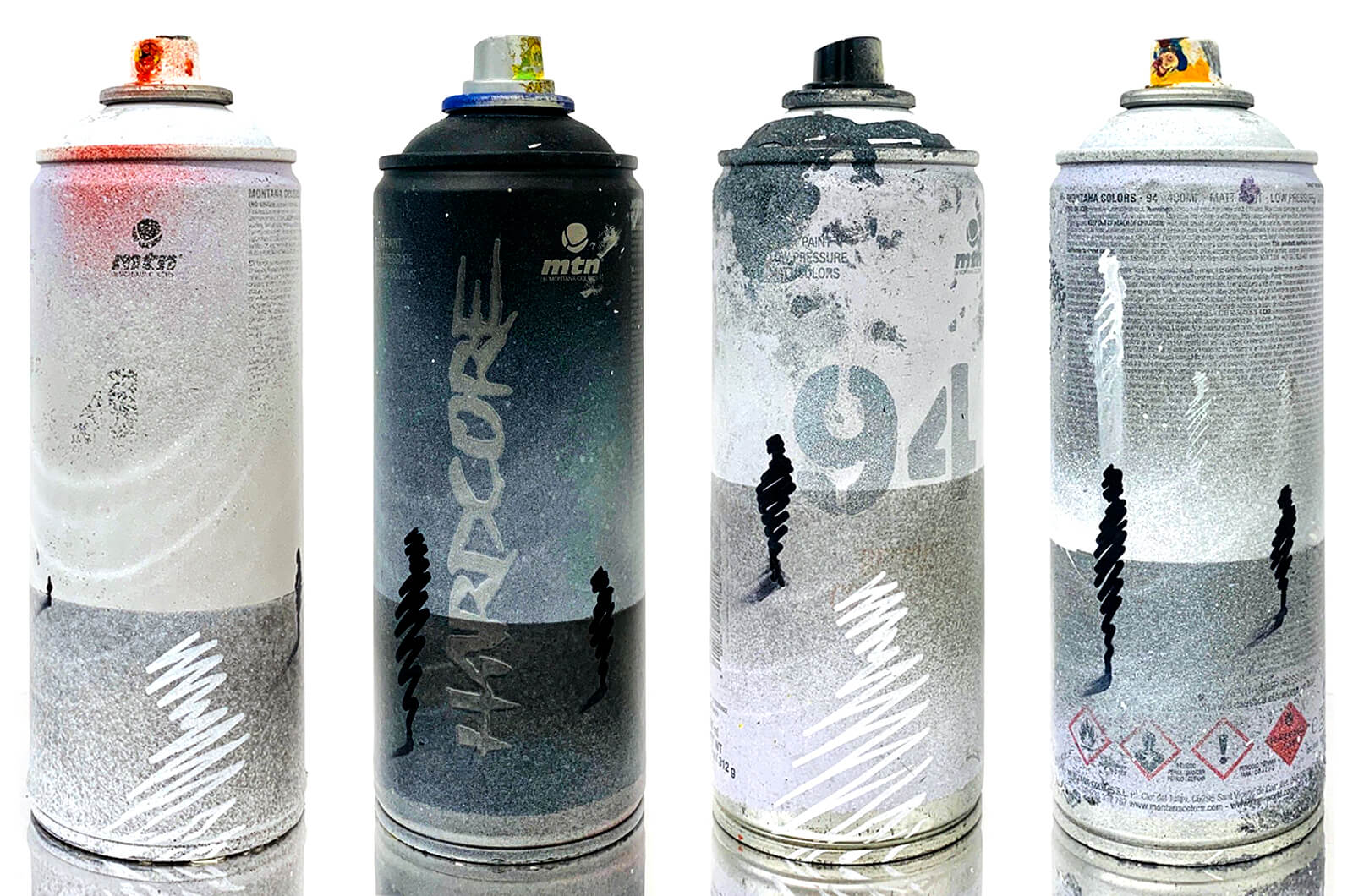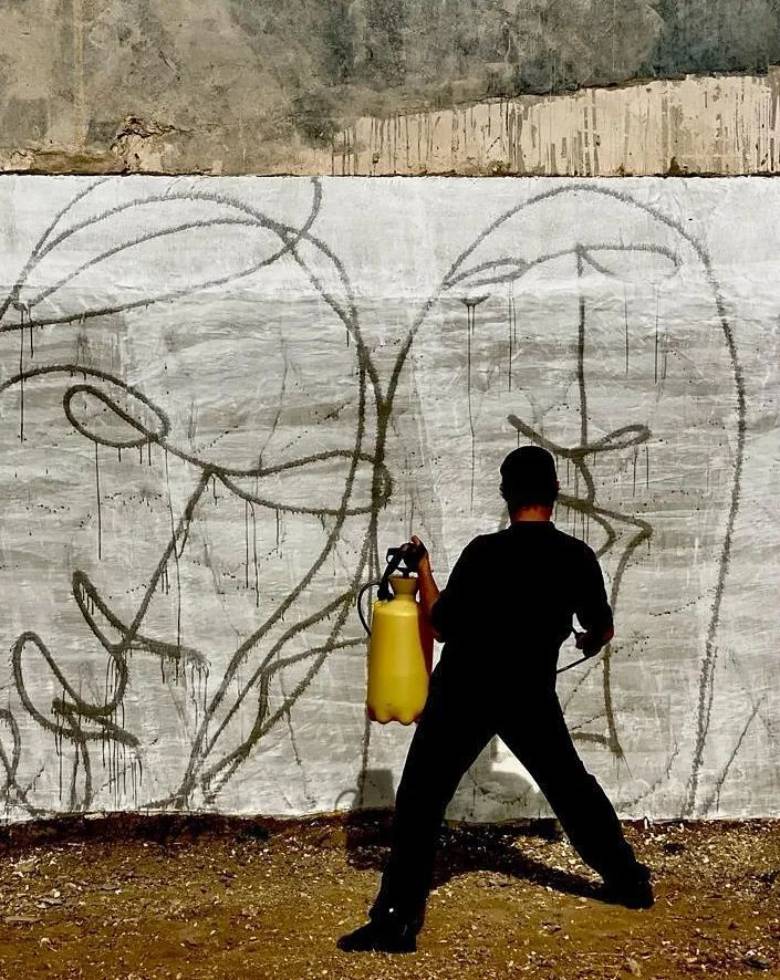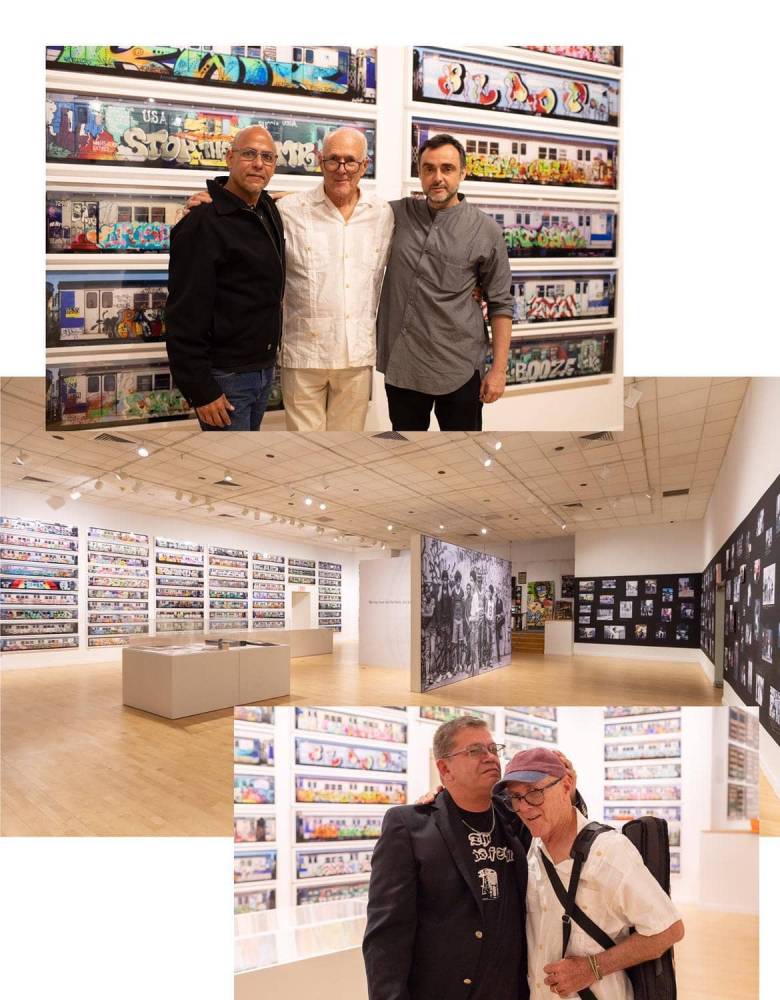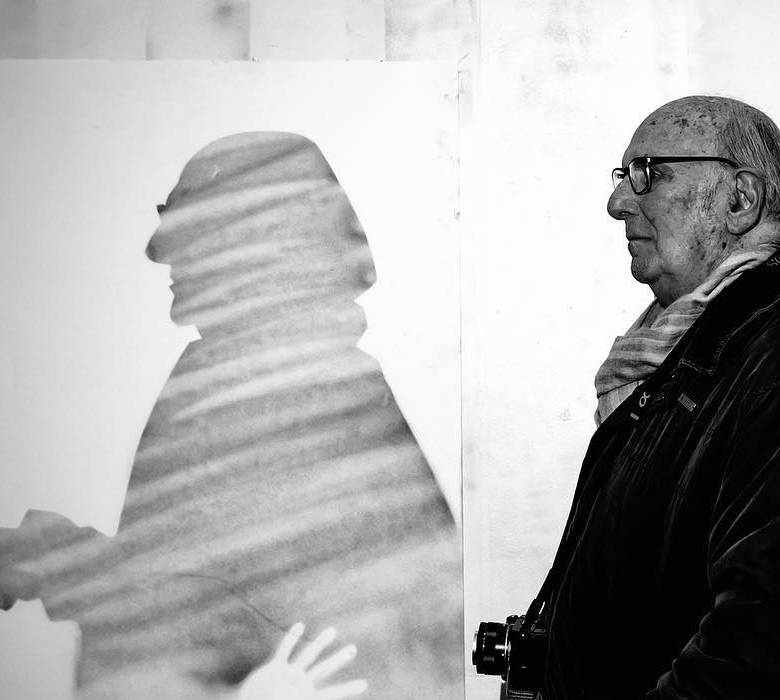
Suso33 was one of the first artists in Spain to break the mold of being a graffiti writer – a path he began as a teenager – to becoming something more. His career is full of activities he developed parallel to his street painting. He has worked as a set designer for theater, cinema and even for Cirque Du Soleil. He has participated in art fairs when they were still places rarely frequented by street artists. Undoubtedly, his way of expressing himself not only through painting makes him an alluring character, but in case you don’t know him, we thought that his interventions on our cans are the perfect excuse for an interview and a chance to get a little closer to him.
1.SUSO AND THE BODY DANCE
“I soon discovered the importance of the bi-laterality I possessed with my hands; that my head thought with images and not with words and how this conditioned my way of perceiving the world.”
We would like to know more about your background. We have read in your bio that as a child you were forced to write with your right hand and that you are ambidextrous. What memories do you have of that? Did you take advantage of that ability from the beginning when you painted graffiti?
The truth is that I don’t have good memories but I have had bad experiences. Apparently, I was one of the last ones who had to live out those bad practices, which were more common than it seemed at that time. A truly regrettable thing in a supposedly advanced society.
I did take advantage of that ability, but without being aware of it. Basically when I couldn’t reach with one hand, I painted with the other. It came very naturally to me. It’s a kind of instinctive body dance where I use my whole body and both hands to paint faster, in order to finish sooner when you are under pressure, because you have to adjust to the time constraints that you have to perform a piece. It’s that simple and natural.

2. BEYOND THE LETTERS
“Sometimes words don’t let me see.”
You are a well-known figure in both graffiti and art, but you are much more than a writer or a painter. Has it been a logical evolution for you? Is it something you’ve always had inside? Do you miss “the letters?”
From a very young age, using letters as shapes made me stretch them, shrink them, and play with them. Not thinking with words but with images made me not understand them sometimes, and this allowed me to do whatever I wanted with them. In fact, in the 90s I began to make a series of pieces on the street based on letters within letters as calligrams, questioning the status quo, because at first glance it was not orthodox graffiti. But it had more letters than a traditional piece.
I don’t miss them because I still play with them a lot. They have always been a great resource and that’s what made me learn, like so many of us. When you’re a bit disoriented you go back to them, the origin, which is where you truly enjoy and truly feel comfortable.

3. THE MULTIPLE FACETS OF SUSO33
Aside from what the graffiti-street art scene knows best about you, we know that your radius of action also touches other disciplines: set design, performance, and even the curation of the exhibitions “Art is Not a Crime“, 1977-1987 and Henry Chalfant: Art vs. Transit, 1977-1987 (Bronx Museum of the Arts, NY, 2019) Can you tell us a little about all that?
From a very young age, doing graffiti on the street and on trains -with little to no information available- I started questioning a lot of things, due to a lack of references, and then I started experimenting with it.
I have always enjoyed the process and the act more than the final object itself. That’s why I do performance, happenings, action painting, etc….
In both the process and the act, all of the documentation takes on a value and language of its own, as we can see today with Telegraffiti. That’s why I also make video creation pieces, in which, among other things, I even destroy what I create and leave no physical trace apart from the documentation.

When I discovered Henry Chalfant‘s research work many years later, I appreciated more and more the importance of his dedication for so many years and the repercussion it had worldwide, and that influenced so many of us. I felt that it was a deserved and just form of respect to pay homage to him and his efforts that have left a mark on so many of us. Even more so nowadays when there is so much blurred information.
Graffiti has shaped me as a person and I had to give back. Tributes must be paid in one’s lifetime and all the more to such a special person for me: my friend Henry.

4. THE WALLS SPEAK: DIALOGUE BETWEEN THE ARTIST AND THE CITY
“Walls speak. They are like a way of life.”
How important to you is the dialogue between the viewer, the streets (cities), and the artist? Tell us what you think it means for graffiti and urban art that someone from the outside world, like Saura, pays attention to it.
Undoubtedly for me the dialogue that is generated with passers-by, the street, the city and the passage of time is very important. For me, everything that is created that is out of your control means it’s alive. The fact that someone like Carlos Saura paid attention to it at the end of his long career, as if it were the closing of a cycle, a return to the origin, seems unique to me. It is unique that a mind as complex and knowledgeable as his focused its attention on it and not on the great murals that decorate our cities. Saura always carried his camera with him and for many years he photographed graffiti and spontaneous street graffiti that was not easily categorized.

5. “ABSENCES” – SPRAY CAN STORIES
Your “Absences” accompany you wherever you go. In this case, as we see in the photos, they even inhabit the sprays that help you create them. Do they represent something special or are they simply a stylistic resource and/or making good use of materials?
The Absences are like saying, “I was here.” They are a tribute to the tag. Like when you walk away after tagging up somewhere and your trace, your footprint, your absence, is still there. I make them in a single stroke quickly as my tag, and in some of them you can even read the letters SUSO or SUSO33 in a single stroke. The Absences come from there; they synthesize the origin of the tag; the “I was here,” where I write my name in the shape of a human shadow, and then I leave.
The idea of using spray cans came about because after painting I usually leave no trace and I take everything with me. Firstly so as not to leave any traces and secondly because I have always found the environmental impact generated by painting to be excessive. I used to take them to get recycled, but when I had too many I started to perform on them. Like what they say about giving them a second life or new suse, but it was also common practice among some writers to sign and exchange cans from other places.

6. THE CITY AS A STAGE
Can you tell us what experiences in your work as a set designer have been the most comforting, or the ones that have pushed you to the limit?
I’ve always viewed the city as a stage, as a living stage where you don’t control the things that happen. But when I have been able to design the scenography of a space – like an opera, a theater, or a museum exhibition for someone else, etc, I have always resorted to my experience in the performing arts. But undoubtedly the idea of designing an exhibition space with real size photographs of wagons with illegal graffiti inside institutional spaces was something quite complex. Not so much due to the shape but rather the content that they displayed, and above all because of the respect due to those portrayed and to the person who portrayed them… a very, very special person for me. It was a very complex task and in many ways it puts you in a compromising position.

2 What do you think?
Add a comment